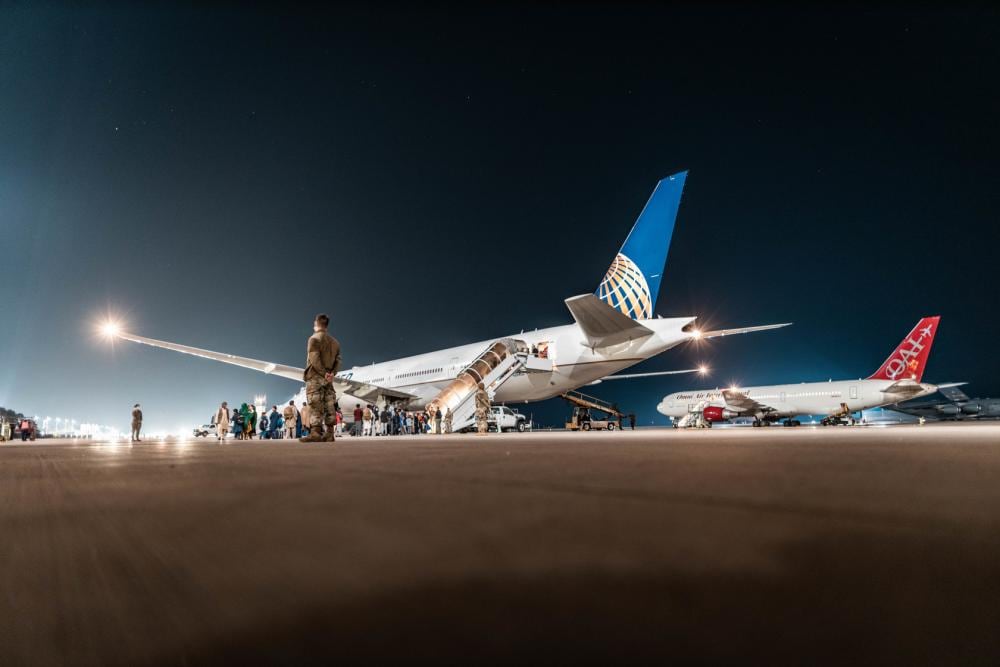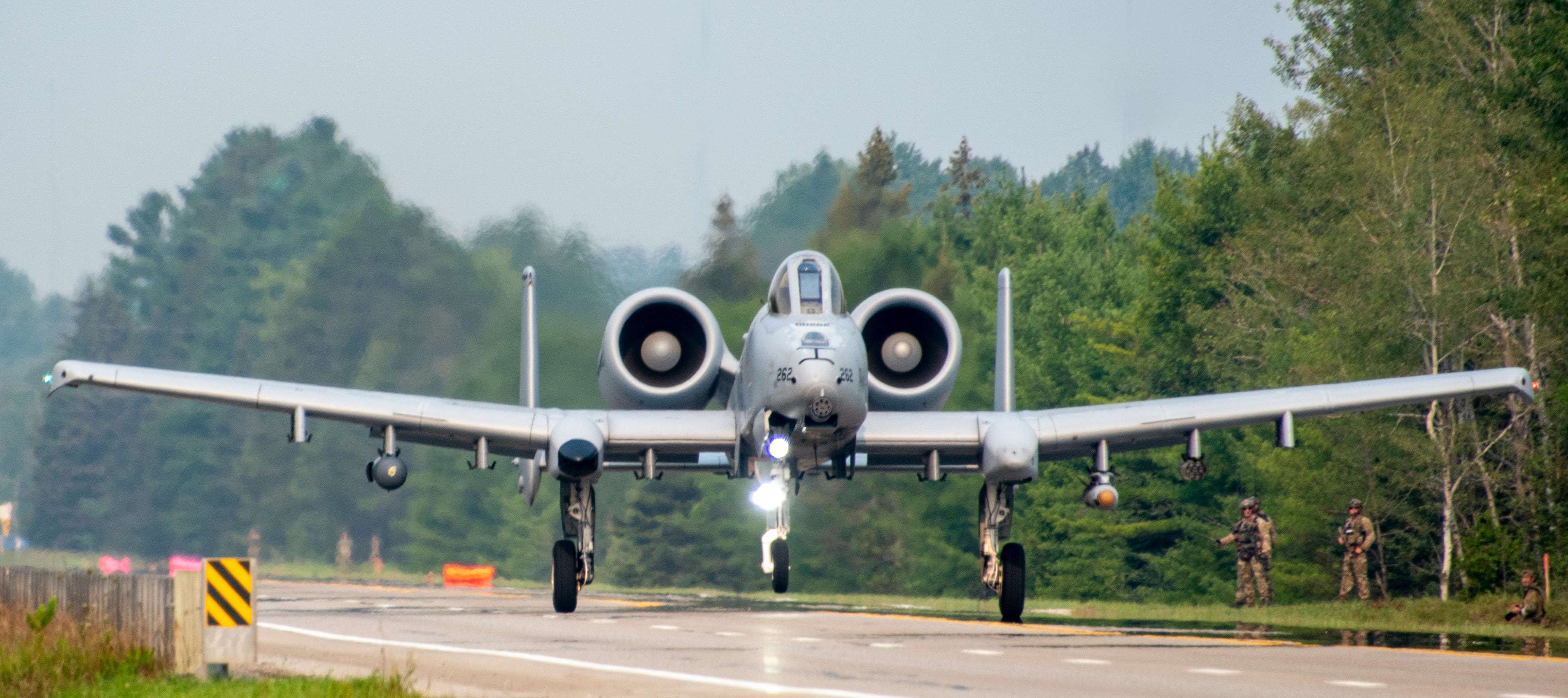Air Force Reserve Lt. Col. John Marks of the 442nd Fighter Wing at Whiteman Air Force Base, Missouri, on Sept. 1 became the only airman ever to log 7,000 hours in the autocannon-toting A-10C Thunderbolt II attack plane.
Marks joined the active-duty Air Force in 1987 and moved into the Reserve after 14 years. He’s known for destroying 23 Iraqi tanks in one day in 1991, and hopes to keep flying until age 62 — two years past the mandatory retirement age. He spoke to Air Force Times on Monday. This interview has been edited for length and clarity.
Q: How did you become interested in the A-10?
The airplane came out when I was in high school, and I’d been interested in planes for a lot longer than that. It was such a radically different design. A buddy and I were building model airplanes, and I went to the hobby store to pick something new. In the process of building a model, you can get more into learning about it. Then my buddy from high school went to an air show in North Carolina. The pilot had the cockpit open and people were climbing up the ladder to take a look inside, and the pilot had an inert bullet from the gun. From my friend’s stories about that and all the pictures, I got totally enamored with the whole idea of flying fighters in the first place, not thinking I would ever actually get to fly the A-10.
In college, a lot of the pilots from this unit lived nearby and they used to come into the store where I worked in their flight suits and their A-10 patches. I remember trying to have conversations with them to ask about the airplane and going out to the air shows where they would do their demonstrations. That cemented it more than anything, that, “Man, if I ever got to fly, I’d really want to fly one of those.”
Near the end of pilot training, you put in your preferences of the airplanes you want to fly. I put the A-10 first. I was the only one in the class to put it first — back then, the F-15, F-16, A-10 were the primary fighters that people would put on there if they were qualified. Sure enough, there was one A-10 in the class, and I got it.
RELATED

Q: You hit 6,000 hours in the A-10 in 2016. What has defined the past five years and the last 1,000 hours for you?
Since 2016, we’ve done two Afghan deployments. I did six combat deployments to Afghanistan since 2006, and they were all different. We got to see the evolution of the war, from almost the beginning to the trip we did last year. You could tell the war was winding down for us, but it wasn’t winding down for the Afghan military. They wanted the Afghan army and the Afghan air force to try to pick up the load because they knew we weren’t going to be there indefinitely.

The most dramatic change in how we operated was from 2018 to 2020. We were going to strictly stay in an advisory role, so we essentially ended up being the eyes and ears for the commanders over the battlefield, advising them on what’s going on without being — except in a few rare instances — a direct participant. It was more intelligence, surveillance and reconnaissance than anything.
The Afghan forces were having a hard time and we knew it. It was a situation where, well, we’re doing what we can in terms of what our leaders want us to do. We would have liked to have jumped into a lot of situations, but that was not the overall strategy. That was certainly frustrating.
Q: How has watching the events in Afghanistan over the past few months made you feel?
It’s definitely a mixed bag. It is hard to describe when you see all the scenes, but you’ve been personally involved with it for so many years. You want to think, “If only they would let us, we can really help them out more,” but to what end? With all of the constraints that we had, I think we did the best we could in terms of training, equipping them for the fight that they needed to be able to take over, and then we unfortunately saw the result once we left.
I don’t know that anybody who has been there as many times as I have would honestly say that it was a really big surprise. The rapid timeline was somewhat of a surprise. But the overall outcome, I don’t know that I can say that it’s really a very big surprise.
Strategy isn’t really important when your job is to support those guys on the ground. It’s to get them through the next 10 minutes, and the next hour and the next three hours, and to get them back to their base. And the next day it’s to get them on their patrol and back to their base again, and then the bigger goal is to get them through their 14- or 15-month tour and get them back home. On none of those occasions did we ever lose a soldier. There were some injuries, but the ones we were supporting all made it back to base. That will always be at a high point of my career, regardless of how the overall war ended.
RELATED

Q: You flew the A-10 in Europe during the Cold War. What did you learn from that, and how do those experiences translate to this new era of global competition?
That was the kind of war that you train for but you hope never happens. I think we’re certainly back to that way of thinking. The type of sophisticated threats against aircraft have risen so dramatically over the years. You just have to accept the fact that if we were involved in that type of conflict, there’s going to be a lot more losses and you’re going to have to accept a lot more risk to be able to do our mission.
Our mission will still remain exactly the same, which is once our ground forces start going in, to be able to stay there with them and support them in close proximity, versus other airplanes that are going to do the other missions as far as taking out targets. We’ve gotten a lot more tools, but then of course the enemy has a lot more tools to deal with us.
In Operation Desert Storm, Saddam Hussein had a very sophisticated anti-air threat system throughout the country. We had very talented pilots and airframes that went in and dismantled the surface-to-air system, and then it became a manageable threat. It was guys with shoulder-launched missiles, but that’s what the A-10 was designed for. It’s got a lot of armor, we can take hits, we’ve got lots of countermeasures. There’s certain niche roles that we still are very useful for, I think.
Q: What professional and personal hurdles have you overcome in the course of your service?
The only way I could have flown the airplane this long is because I’m in the Air Force Reserve and I have a position that allows you to fly until age 60. I had to make some career decisions, and my wife and I both left active duty and joined the Reserve. When we got married, we were stationed apart. It’s very hard to get assignments together. We were about four hours apart, and we drove back and forth a lot. That was one of the deciding factors of, “Hey, if we went to the Reserve, we wouldn’t have to move around and we can raise the kids in one place.”
Q: What are your biggest challenges with the A-10 right now?
The biggest challenge right now is that the Air Force wants to reduce the A-10 inventory. The problem is, suppliers won’t stay in business to make parts for airplanes they don’t think will be around. We’ve run into this multiple times. They had already started to shut off some of the supply chain stuff even before Desert Storm happened, and it was very difficult to get that restarted. That has happened at least two more times since then. They’ve used up almost all the spare parts that they got from other airplanes. Most of our airplanes have been converted to the new wings, but a lot of the parts are really getting hard to come by and maintainers are doing fantastic work trying to keep them flying.
The bigger challenge, of course, is, what is the future? It’s not going to fly forever. As a unit, do you want to be the last unit to fly an airframe? Or do you want to get in on something else earlier? What’s the future of the unit once that airplane does go away?
RELATED

Q: Is there anything that you haven’t done over the course of your career that you would like to accomplish by the time you leave?
I want to keep all my qualifications and still be relevant and be an instructor and be up to speed on all the systems. I don’t ever want to be that guy that the unit doesn’t want to fly with the new guy, or doesn’t want to put on an upgrade ride.
My son is in college, but he wants to be a pilot as well. I don’t know that the timing would work out, but if I could get him through training and fly with him in a formation of A-10s, that would be pretty awesome.
Q: Do you have any flight rituals or traditions?
Every time after I’m done flying, before I get out of the seat, I always turn around and just look down at the airplane and remind myself how lucky I am to keep doing this. I take a couple beats to take it in and enjoy it instead of always being on the go. Then I get down the ladder and keep on going.
Rachel Cohen is the editor of Air Force Times. She joined the publication as its senior reporter in March 2021. Her work has appeared in the Washington Post, the Frederick News-Post (Md.), Air and Space Forces Magazine, Inside Defense, Inside Health Policy and elsewhere.




